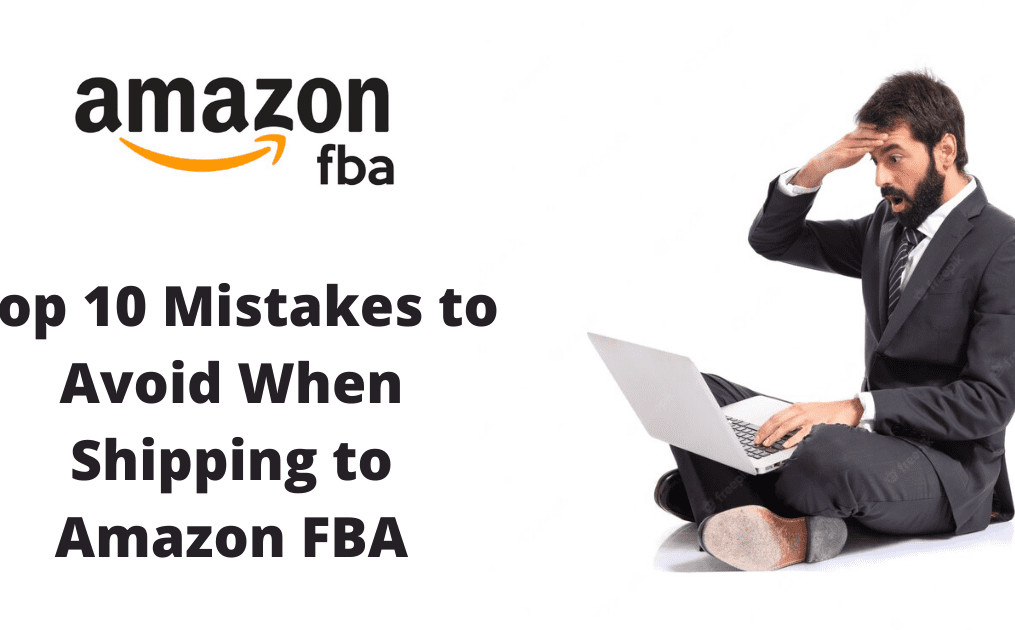If you want to be an Amazon seller, you’ve probably heard of the FBA option. Fulfilled by Amazon (FBA) is an acronym meaning “Fulfilled by Amazon.” You don’t have to be entirely in charge of the fulfillment of the things you’re selling if you use this function. Instead, Amazon will be in control of organizing your purchases in their warehouse, as well as shipping, packing, package tracking, refund management, and return handling.
Independent sellers and small business owners benefit greatly from FBA. It’s a lot less expensive than doing it yourself. However, before you get started selling on Amazon, we’d want to advise you to avoid a few common blunders. The following Amazon FBA blunders will save you money and help you prevent negative consequences.
10 Common Amazon Errors & How to Fix Them
Picking a Narrow Niche
As a private label seller, determining which category your product will be placed in is one of the first steps in creating a product listing. It’s critical to place your goods in the appropriate category during this phase. To acquire the Best Seller Badge, some merchants strive to categorize their goods in a category with less competition. However, because many searches are limited to a single subcategory, wrongly categorizing your goods may result in you being excluded from important search results. Sellers can look up their product in Seller Central to see what categories it fits under; just make sure it’s related to the one you pick.
Ignoring Amazon Terms and Conditions
Make sure you read Amazon’s terms and conditions carefully. Ensure that you don’t miss anything or forget any terminology along the road. Your seller account may be suspended if you violate these terms and conditions. This blunder can cost Amazon sellers a lot of money… Especially if your things have already been transported to a fulfillment center! If your account is suspended, you will not be able to mail the things! Worse, you won’t be able to ship them out, so you’ll have to pay the Amazon fulfillment facility to retain them. We also recommend that you go over the terms and conditions if you want to make adjustments to your product listings.
Lack of effort in preparing Amazon product listing
You must prioritize your product descriptions in addition to remembering the ideal keywords to employ for your products. Every listing has a product description field where you must fill in some of your product’s top features. You can either use a basic product description or come up with your own. Of course, we prefer the latter. If you create your own, make it appealing by describing the product as if you were speaking to a potential consumer face-to-face.
You must also include other product details, such as the brand name, colour, and material, in addition to a full product description. While Amazon shoppers frequently inquire about a specific product, they also prefer thorough listings that provide practically all of the information they require.
Ignoring Other Costs
Aside from storage costs, you should keep an eye on additional costs associated with product purchase. If you’re going to source your products from another country, you’ll need to factor in freight expenses, as well as the weight, volume, and sort of product you’ll be selling. Ocean freight services are less expensive than air freight. Some people believe that sea freight takes longer than air freight, although there are sea freight services that offer speedier travel times. You simply must devote time to investigate.
Also, keep in mind that the higher the amount of goods you ship, the lower your freight expenses may be. But, before you order more products, you must first learn to estimate whether or not you will be able to sell them quickly. If you’ll only keep the products longer than they should be kept, buying additional won’t be worth it. Other costs may have an impact on your profit margin if you ignore them. Cutting out unnecessary costs during the procurement process can help you achieve a higher profit margin and even offer more competitive retail prices for your products.
Not Updating Inventory
When compared to more experienced Amazon merchants, new Amazon sellers typically deal with smaller inventory volumes. However, they must correctly manage their Amazon inventory system to avoid supply shortages, which could harm a seller’s Amazon image. If you’re a new seller, you must watch the number of orders you receive, and regularly update your inventory to prevent this from happening.
Meanwhile, holding an excessive number of products in the Amazon fulfillment center might be pricey because you must pay additional storage fees for these items. We recommend sending products to the fulfillment center only when they have actually been ordered by your clients for additional practical reasons. In this manner, the item(s) will be delivered out to buyers right away, and you won’t have to pay any extra storage fees.
Having too much Competition
Amazon has around 2.5 million vendors. Unless you’re making your own one-of-a-kind things, there’s a significant probability that your product listings will already have multiple merchants providing the same items. That’s why before you start selling a specific product, you have to be aware of the number of your competitors. Also, see whether there are any that have already been founded. The objective is to provide products that have fewer competitors. As a result, you’ll have a better chance of growing your market share.
If, on the other hand, you believe you can still sell a product despite a large number of competitors, you can investigate how much the competitors are providing. Examine whether you can afford to provide cheaper costs in order to attract more customers. Remember to include in the cost of shipping your purchases. Keep in mind that Amazon users/buyers (or any other e-commerce customer) prefer lower-priced listings.
Inventory mismanagement
Warehouse space is a valuable thing. Knowing your market and what quantities to supply to Amazon in order to optimize your returns and reduce your expenditures is part of inventory management. FBA merchants are charged storage fees by Amazon warehouses, which encourages you to sell products and ship what you know will sell quickly. The longer your stuff remains in an Amazon warehouse without being sold, the more fees you’ll pay.
You should also think about signing up for Amazon Prime. You must satisfy and maintain adequate seller-performance criteria to indicate that both you and your products are trustworthy in order to use Amazon Prime for order fulfillment. This can involve things like maintaining low-defect inventory and adhering to the company’s listing and product criteria.
Running PPC Campaigns without a strategy
When searching for things to buy on Amazon, customers use keywords. If you are a new seller, it will be hard for you to get into the first page of Amazon’s search engine results pages (SERP) for almost every generic search term possible. So, if you want to be more visible, we propose using a keyword that is more distinctive or specific, or a search term that is less competitive. It’s at this point that keyword research comes into play.
Before you create a listing, you must first search for keywords connected to the goods you want to sell. This might assist you in determining the exact amount of search results for your goods. The listings of more trusted sellers or those with a large number of reviews or orders typically appear in the first few pages of Amazon SERPs. It would be difficult to compete against established businesses, which is why Amazon PPC might be a good option.
Pay-per-click (PPC) advertising on Amazon is when you pay Amazon when a potential customer clicks on your ad. Sponsored Brands, Sponsored Products, and Product Display Ads are the three types of advertising options offered. Many sellers feel that if their products are good enough, they will sell on their own, but this isn’t always the case, especially if there are a lot of competitors. When you’re just starting out in business, it’s actually not a bad idea to invest money in advertising. With the use of PPC, you may first develop your Amazon seller profile, then gain more exposure and engagement as time goes on.
Final Thoughts
Amazon FBA is a HUGE network, and when you become a part of it, you are at the mercy of Amazon shipping times and locations, inventory limits, and maintaining a good customer experience. The reward is, of course, a Prime badge, great shipping rates, higher visibility, better consumer trust.
Keeping track of these typical Amazon FBA seller blunders might help you prevent them in the future and avoid incurring unneeded fees. If you have any additional questions concerning Amazon FBA in general, please don’t hesitate to contact us; we’ll be happy to assist you.



